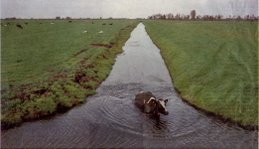Today, we visited four projects of life quality (health-related) in some deprived neighbourhoods of the city of The Hague.
- Medical Centre Rubenshoek (STIOM) and Pharmacy Transvaal
- Kesslerstichting: Project for the Homeless and Parnassia Mental Care/Diversity Policy
- Medical Centre Haaglanden (Hospital with diabetes project) (Caribbeans suffer oftener than others from this kind of diseases)
- Youth Centre “De Mussen » at “The Mall”, a Christian-inspired home and coaching centre for Antillean youngsters in difficulty
- I spent the morning visiting the Schilderswijk “Volksmuseum”, a centre of popular memory of the earliest history of the quarter, when it was settled by people who came to the city from southern and north-east provinces at the end of the 19th century. It was created when the overall renovation of this huge neighbourhood started at the beginning of the eighties. My difference of opinion with the mostly voluntary group who started it, was, and is, that you should not limit neighbourhood immigration history to Dutch immigrants. Southern Europeans who immigrated during the fifties and sixties, as well as the North Africans, Turks and Latin Americans who came after them, share an immigration history with the first inhabitants of the area. This is a strong common ground for local integration and common activities, as has been proven, for instance, in the Paris banlieue city of Châtenay-Malabry. As an urban regeneration expert, I was not too disappointed when I was told, that the centre will have to close its doors shortly because of lack of funds. As a social historian, however, I regret very much, that a fine chunk of popular history is at a grave risk now. In the afternoon, I participated in the EUKN Dutch launch, a conference of Dutch experts that took place in another part of the city. See following post.
It was also disappointing to see, that, since the years that I monitored the city’s regeneration policies as a civil servant, apparently, not much progress has been made in transforming the city services in order to facilitate an integrated approach of territorially accumulating problems. The The Hague diversity- and integration-policies are very sensible and rich, but there is no way, that they could by themselves steer efficiently the necessary emancipation processes in the city’s hot spots.
We will discuss these matters tomorrow in a general evaluation session at the City Library, located at the top of the huge white City hall, designed by Richard Meier.
No time for cable replacement today: photos and final impressions will follow in the coming days.




No comments:
Post a Comment